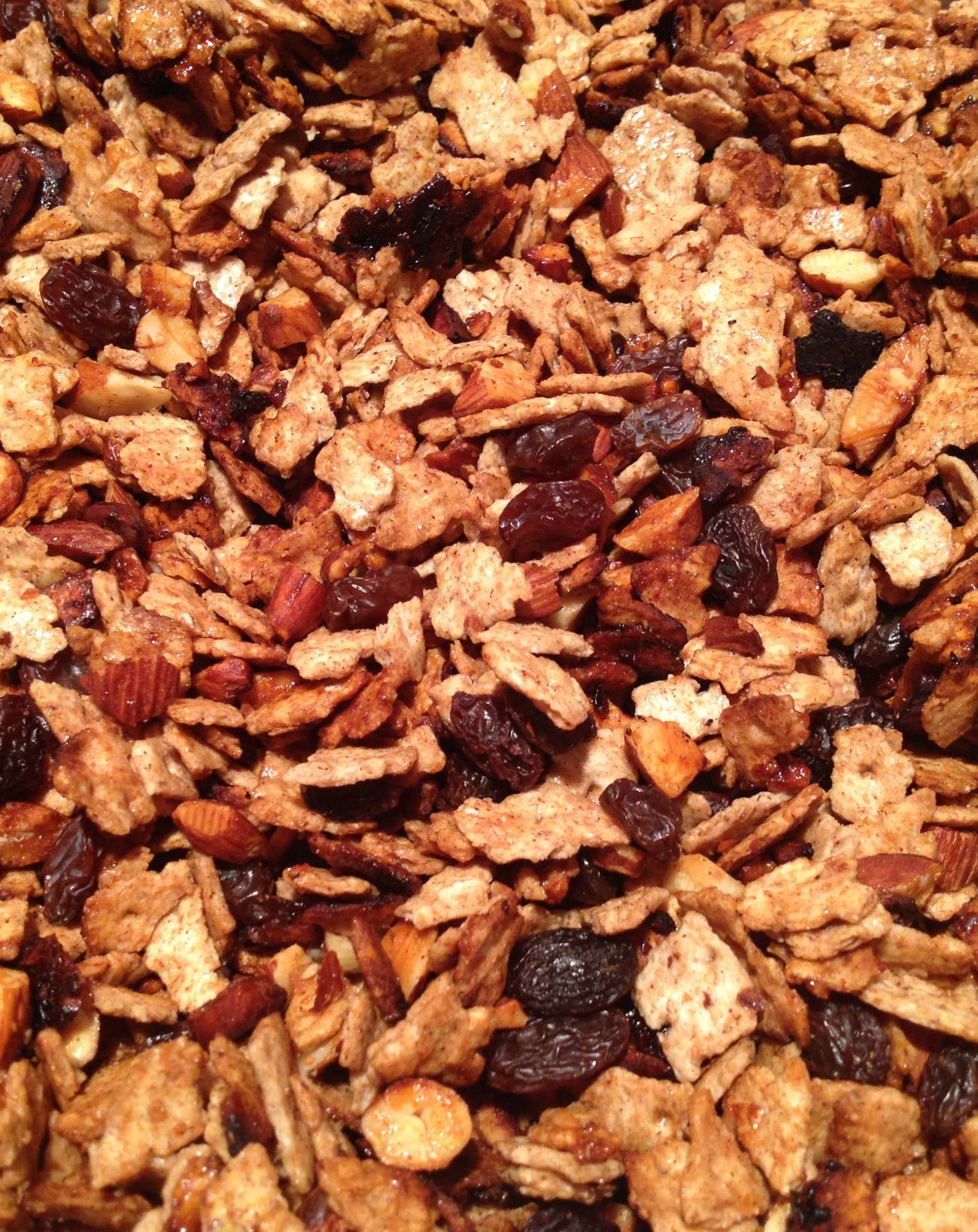A Passover Snack That Packs a Crunch
How to make granola you’ll want to eat by the handful




In April 2008, my friend Tammy and I launched a mission: We had what we believed to be the recipe for the best Passover granola anyone had ever tasted— wholesome, delicious, and even stays crunchy when doused in milk—and we promised to make it for our whole Jewish community in West Hartford, Connecticut.
Launching into production mode in the industrial kitchen of our shul, with its long stainless-steel counters, deep side-by-side sinks, and cavernous walk-in fridge, we schlepped shopping bags filled with almonds, honey, butter, raisins, cinnamon, and nutmeg, and dozens and dozens—and dozens—of 1-pound boxes of Streit’s Whole Wheat Matzo Farfel piled high.
The kosher-for-Passover granola idea came about a year earlier, when I was in Norway with my three Viking Jew, middle-school-age sons, Thor, Balder, and Odin, spending a year with my family. Tammy’s son Jacob was visiting us for April vacation, which coincided with Passover.
Jacob is a vegetarian, which would normally pose only the most minor inconvenience if he visited. But on Passover, when we’d eat more meat than any other time of the year, I worried. What could I make?
Tammy-the-wise anticipated my unease, and sent two boxes of matzo farfel with the recipe for her granola. With that and a tub of almond butter, she promised Jacob would never go hungry.
I baked the granola and then I couldn’t stop eating it. I told Tammy it was a shame not to share this goodness with the world; in fact, we should start a granola business! Since I was a fresh Ph.D. in French literature and Tammy a molecular biologist, this made perfect sense to us. We decided to give it a go the following Passover.
I moved back to the States, and as spring rolled around we began to scheme.
This was before the days of social media, so armed with handwritten posters and freshly made granola samples in tiny paper cups, we set up tables at the JCC, in our synagogue, and outside our kosher market.
And the orders piled in.
We registered our LLC, shopped at Restaurant Depot for industrial-size cooking utensils, and designed the packaging: 1-pound brown paper bags with roll-down tops and a little cellophane window in front to show the golden goods. We created oval and purple labels reading: “Passover-the-Granola.”
But most importantly, we had the Hartford Kashrut Commission’s seal of approval—an Orthodox certification.
Ten days before Pesach, we began our baking marathon: sleeves rolled up, hair covered in bandanas, chef’s aprons tied. Soon, the synagogue kitchen was infused with the sweet smells of honey, butter, and cinnamon baking, and we dumped one promising golden batch after another into massive plastic bins, then portioned the granola into bags.
They flew off the shelf; we couldn’t bake it fast enough.
By the end of Passover, we had made and sold more than 200 pounds, and our venture made such a buzz around town that even Whole Foods expressed interest in carrying it the following year.
But then, once Passover was behind us, a reality check.
Notepads in hand in my husband’s tax office, we eagerly awaited tips on how to take our startup to the next level. When he told us that in order to just break even, we’d have to bake at least 3,000 pounds of granola, we both burst out laughing. That would have involved going major league industrial, spending most of the year planning and investing. Is it bakers we really wanted to be? Tammy and I looked at each other and knew what the other person was thinking.
Instead, every year, I bake a few batches to the delight of family and friends. And yes, for my own enjoyment.
Nina Lichtenstein is a writer, teacher, and storyteller who divides her time between Maine and Tel Aviv.